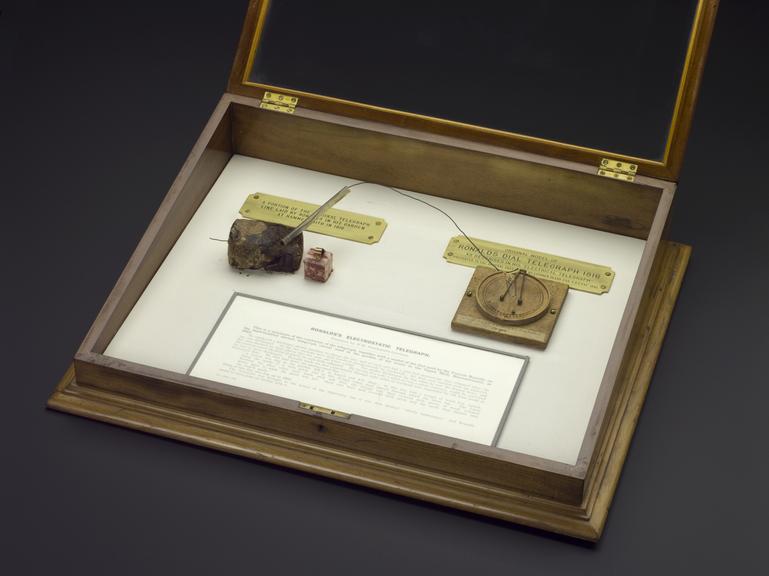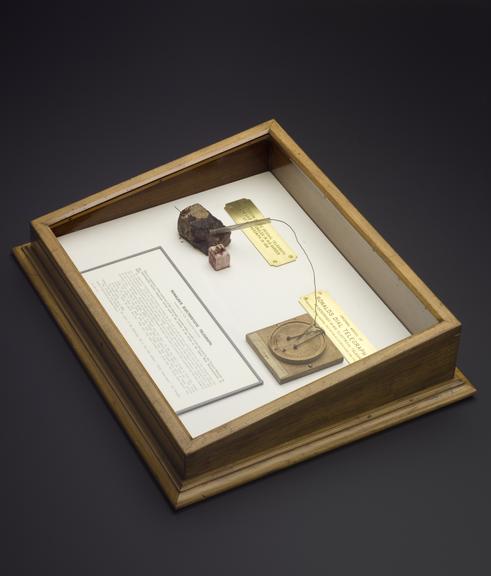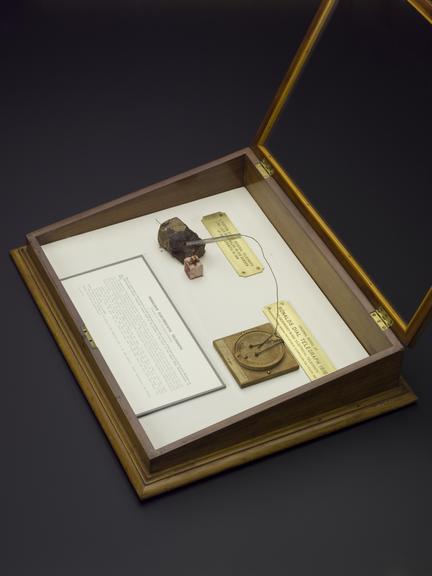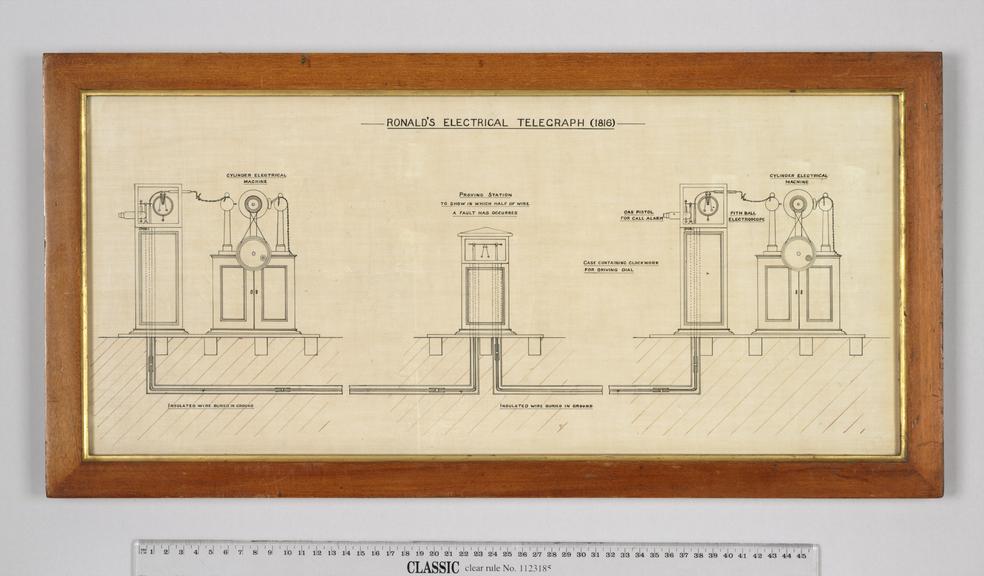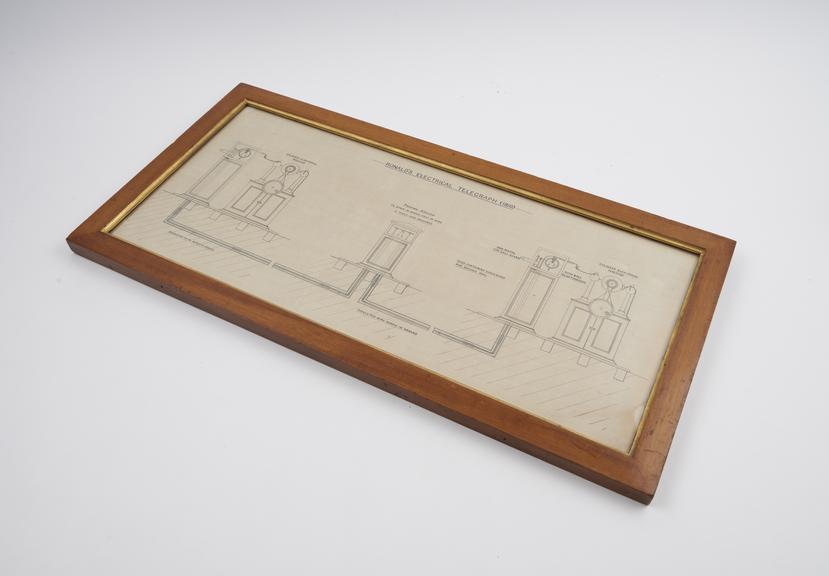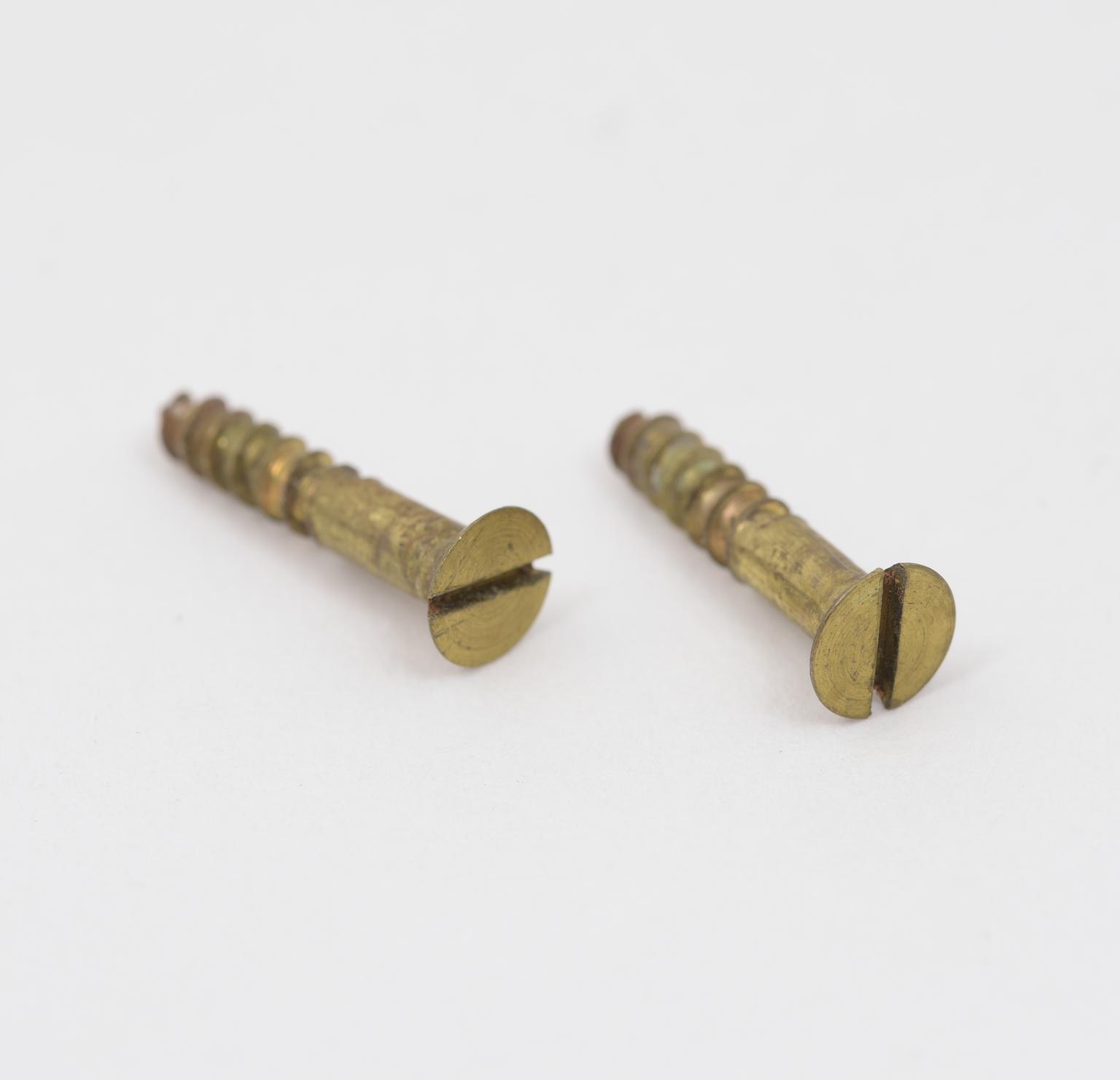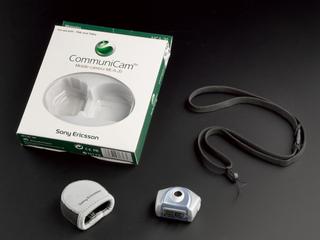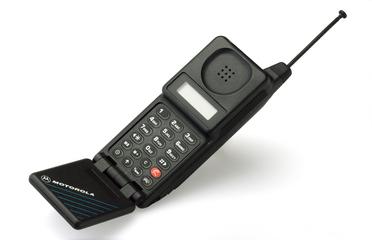Part of electrostatic telegraph, 1816
Part of electrostatic telegraph, made by Sir Francis Ronalds, London, England, 1816.
More
This is part of the early telegraph system that the inventor Sir Francis Ronalds installed in the garden in his house in Hammersmith. The wire is original, while the dial is a reconstruction. Ronalds used a line charged with static electricity, with a pair of pith balls at each end. Pith balls are small, lightweight objects that are good at picking up charges. When the line was charged, the two pith balls would move away from each other. When the line was earthed, they would drop. At each end of the line, there was also a dial, with the two being driven by clockwork at the same speed. The sender would discharge the line when the letter desired reached the top of the clockwork dial at one end. This caused the pith balls at the other end to drop, and allowed the receiver to see which letter they dropped at.
- Measurements:
-
overall: 60 mm x 450 mm x 100 mm, Wt. 3kg Est
- Materials:
- brass (copper, zinc alloy) , textile , plastic (unidentified) and iron
- Object Number:
- 1894-158 Pt1
- type:
- component - object and telegraph
- Image ©
- The Board of Trustees of the Science Museum






